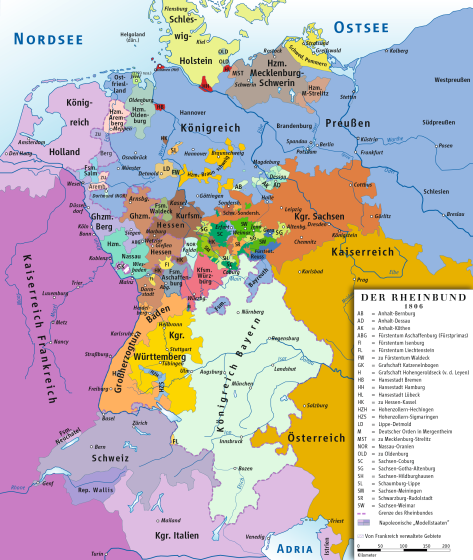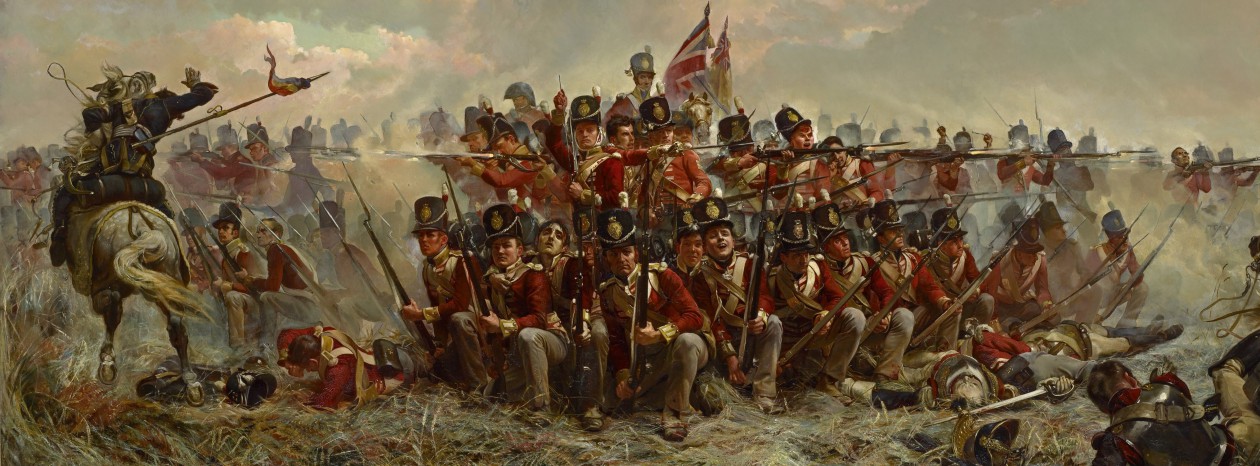After the Treaty of Pressburg, which was a result of the Battle of Austerlitz and was signed on 26 December 1805, Napoleon decided to create a satellite body of states from several German nations under a confederation which was called the Confederation of the Rhine. Before, these territories were part of the Holy Roman Empire but after his defeat at the Battle of Austerlitz the Holy Roman Emporer was forced to cede various parts of his territory and recognize some monarchs (the kings of Bavaria and Württemberg) which previously were his legal subordinates because kings within the Empire were legally not allowed.
Napoleon merged 16 states into the Confederation of the Rhine which was officially formed with the Treaty of the Confederation of the Rhine which was signed on 12 July 1806. Initially the following 16 states joined the Confederation of the Rhine:
- Grand Duchy of Baden

- Kingdom of Bavaria

- Grand Duchy of Berg

- Grand Duchy of Hesse-Darmstadt

- Principality of Regensburg

- Kingdom of Württemberg

- Duchy of Arenberg

- Principality of Hohenzollern-Hechingen

- Principality of Hohenzollern-Sigmaringen

- Principality of Isenburg

- Principality of Leyen

- Principality of Liechtenstein

- Nassau-Usingen
 (forms the Duchy of Nassau
(forms the Duchy of Nassau  with Nassau-Weilburg)
with Nassau-Weilburg) - Nassau-Weilburg
 (forms the Duchy of Nassau
(forms the Duchy of Nassau  with Nassau-Usingen)
with Nassau-Usingen) - Salm-Salm (forms the Principality of Salm
 with Salm-Kyrburg)
with Salm-Kyrburg) - Salm-Kyrburg (forms the Principality of Salm
 with Salm-Salm)
with Salm-Salm)




